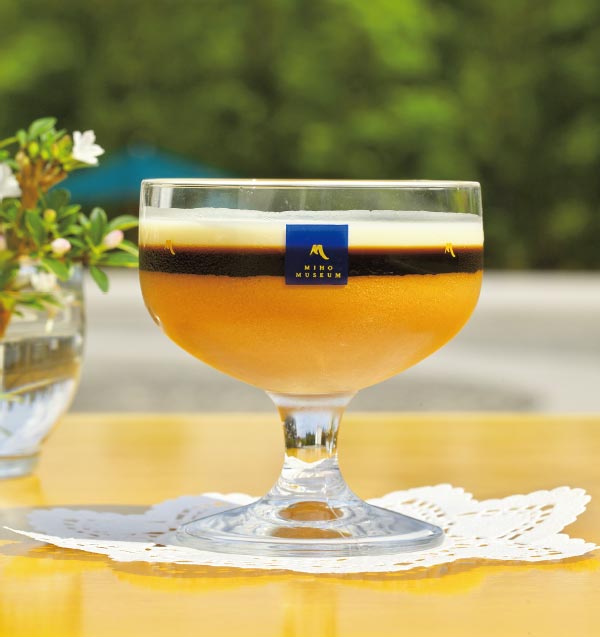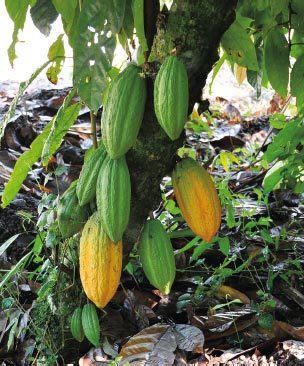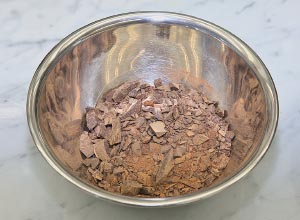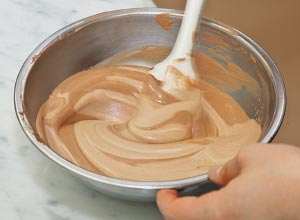

Chocolate Babaloa

Take a spoonful of sweet white
blancmange, savor the firm espresso jelly, and enjoy a wave of
chocolate Bavarian cream spreading across your palate! Within the
fluffy texture on your tongue comes a surprisingly rich bitterness
of chocolate. But the sweet creamy flavor gently returns, leaving
you with a taste that melts in your mouth as you take your last
bite. Don’t take this lightly. This is no ordinary dessert.
Chocolate from Brazil began arriving to MIHO MUSEUM’s pastry
kitchen recently. This chocolate is produced in the Tome-Acu region,
which is known for its agroforestry farming practices. Among some
experts, Tome-Acu chocolate is of the highest quality. Here unfolds
a drama…
Tome-Acu is home to many Japanese immigrants and an area
that flourished in the 1920s with pepper cultivation. However,
several decades later, the pepper crops were destroyed by disease
and the farmers fell into extremely difficult times. Then, one
farmer looked at the indigenous people of the Amazon and wondered
how it was that they could live so peacefully. A closer look
revealed they established a lifestyle in which they cultivated
various crops around their homes so that “even if one crop goes bad
as long as the others are doing well, there is no problem.”
Eventually, he grew various plants—bananas, cacao, pepper, fruits,
and mahogany for timber, and switched to a farming method in which
he received the bounty of the harvest while reviving the forest. As
the crops grew abundant, the birds and insects returned to the
regenerated forest.
Cacao cultivation using the agricultural chemical-free and
chemical fertilizer-free Shumei Natural Agriculture farming method
has started to be used in the Tome-Acu region. Our restaurant uses
Tome-Acu chocolate and peppers and perhaps in time we may even get
fruits from there too!
Now, let’s get back to the chocolate babaloa. The balance
of the three layers is the deciding factor of this delicious
dessert. Because products from the same area are said to be
compatible, the espresso jelly in the second layer is made from
Brazilian coffee and when it is made to be the same soft texture
as the Bavarian cream, the espresso comes to have a gentle
bitterness. The flavorful chocolate cream is made smoother by
whipping the egg whites. Then the Bavarian cream, which has some
tartness and acidity while it is hot, becomes just right when it
cools. Try this chocolate babaloa, which links Brazil and Japan,
and experience the cool forest breeze of Brazil within the
naturally rich flavor of this sweet!

Cacao pods
 Chocolate from Brazil |
 Lightly finishing the chocolate babaloa with egg white |